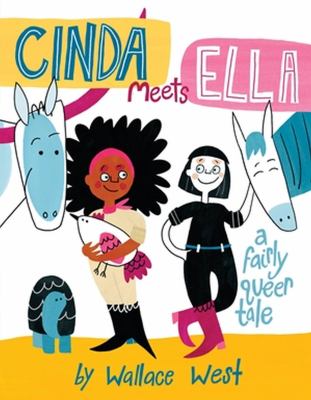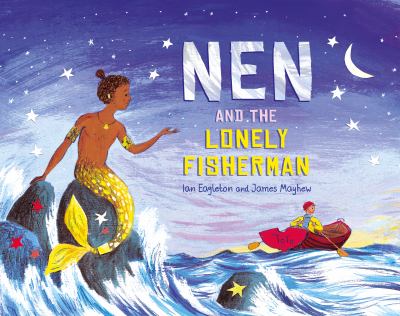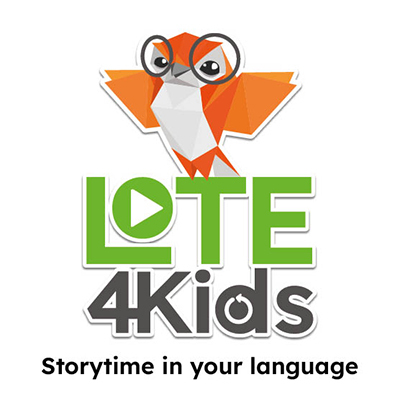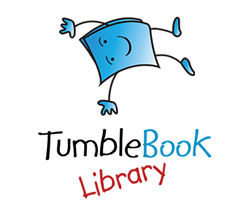June is Pride Month, which is celebrated by honoring the LGBT+ community and their experiences. If you’re unfamiliar with the acronym, LGBT+ stands for Lesbian, Gay, Bisexual, Transgender, and everyone else in the queer community (the “+”!). Anyone can be a member of the LGBT+ community, regardless of their background, ethnicity, religion or age. The reason these identities are grouped together in the LGBT+ acronym is that many of these people share similar experiences — in many places, it is dangerous to be openly gay or trans because of the backlash that one can receive. This is why the concept of Pride is so crucial to queer culture; the right to be openly proud of yourself, to openly be yourself, is not guaranteed to every person. Through sharing stories about the joy and challenges of the queer experience, authors seek to encourage seeing queer people as people first and foremost. There are about as many different kinds of people in this world as there are people in it. As parents and caregivers, familiarizing kiddos with experiences different from their own allows for a greater sense of empathy to develop.
Why are books about pride and LGBT+ experiences important for children to have access to, even when those children aren’t LGBT+ themselves or have no LGBT+ family or friends?
During my early childhood education-focused courses, I have found myself repeatedly coming across the concepts that Dr. Rudine Sims Bishop draws focus to in “Mirrors, Windows, and Sliding Glass Doors.” The idea states that a book or story can act as three things for a reader: a mirror in which they see their own experiences reflected back at them; a window through which they can witness another’s different experiences; and a sliding glass door, through which they can step and experience another’s life as their own for a brief period of time. In the excerpt linked at the bottom of this post, Dr. Rudine Sims Bishop focuses mainly on the importance of racial representation for all people — the mirrors that ought to exist in many more places than they do. She states: “When children cannot find themselves in the books they read, or when the images they see are distorted, negative or laughable, they learn a powerful lesson about how they are devalued in the society in which they are a part.”
Children deserve to see aspects of their lives — themselves, their families, their heritage, their culture — represented positively. It’s also important to remember that the media one consumes informs their opinions — when the only representation of a certain group is that which makes fun of it, people begin to grow comfortable with stereotyping and making fun of others. Not only does positive representation encourage confidence for those in marginalized communities — it also allows those who are unfamiliar with another experience or culture to empathize with people who are different from them.
Of course, along with differences in ethnicity, culture, language, religion and lifestyle, LGBT+ identities deserve to be represented as well. When people are introduced to the concept of gay, bisexual, transgender, etc. individuals through media, they get a chance to identify with those characters and witness that their queerness is an aspect rather than the whole of their personality! This in turn helps them to be more accepting of those they meet in life who are queer. It can even help some people to understand themselves better, especially if they themselves are queer, too. Regardless, as Dr. Rudine Sims Bishop points out, it’s deeply important for children (and anyone!) of any identity or experience to see LGBT+ lives represented positively.
Now let’s look at some of the newest Pride picture books at DBRL! These are also a couple of my personal favorites
Rainbow Retellings
“Cinda Meets Ella” by Wallace West (2023)
This story is a TREAT! I am a sucker for fairy-tale retellings at any time, but throw a queer twist in there and I am doubly sold. Lovely, rootin-tootin’ Cinda is invited to the rodeo by a person she meets who is “stunning as a sunset” named, of course, Ella. I really love the atmosphere of this story — the characters are adorable and the language and art style add to the ‘Wild West’ of it all. Like I said, I love a fairy-tale retelling, but a memorable one has a big enough personality to be more than just “a story you’ve heard before.” This book is also a treat to read aloud since the prose is silly and creative without being unintelligible. West also has a book called “Mighty Red Riding Hood” that focuses on the denial of gender norms. The pictures are clear and well-designed, and the theming is super cute. ALSO — Cinda has a team of animal sidekicks who are all very adorable. (My favorite is the pink snake since he reminds me of the Rope Snake from Mother 3.)
“Nen and the Lonely Fisherman” by Ian Eagleton, illustrated by James Mayhew (2024)
This story is unbelievably touching. It’s one of my favorite retellings of “The Little Mermaid” ever, especially because Hans Christian Andersen’s “The Little Mermaid” itself is often theorized to be an allegory for gay love at a time when it was unsafe to be publicly queer. For this reason, the story has a special place in the hearts of many LGBT+ people. This version is not quite so dark or sad as the original, and the uniquely colorful and movement-filled illustrations set a wonderful, magical tone. There are even instances where one must turn the book 90 degrees to display the upright picture, which makes storytelling super dynamic! This cozy book would make a great bedtime story.
Two-Spirit Representation
 “Phoenix Gets Greater” by Marty Wilson-Trudeau (2022)
“Phoenix Gets Greater” by Marty Wilson-Trudeau (2022)
The experiences of LGBT+ people span hundreds of years and thousands of cultures. Two-Spirit, or 2S, people are honored within many indigenous communities; this gender identity represents the dual spirit of a person with both masculine and feminine traits. As this article by The Indigenous Foundation explains, it’s not appropriate for non-indigenous people to claim the term Two-Spirit as representative of their identity — Two-Spirit identities are sacred and cannot be colonized by outsiders to the Indigenous communities that recognize Two-Spirit identities. I enjoyed “Phoenix Gets Greater” because it represents a kiddo who is uplifted and supported by their family rather than ostracized for their interests and expression. Though Phoenix may be different from others, he’s encouraged to embrace himself even when others make it difficult. This is an important message and can also help demonstrate to kids why mistreating someone who is different is unkind. Learning through storytelling how people feel when experiencing different things can help prepare children for adulthood — in this case, witnessing the harm that some comments can do.
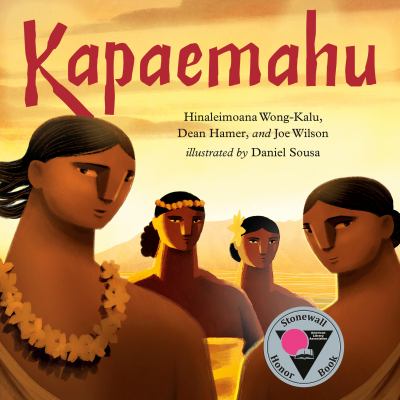 “Kapaemahu” by Hinaleimoana Wong-Kalu (2022)
“Kapaemahu” by Hinaleimoana Wong-Kalu (2022)
This is another fantastic book that taught me quite a bit about 2S heritage within different Indigenous communities. This distinctly and beautifully illustrated picture book tells the legend of four healers who journeyed from Tahiti to the Hawaiian islands, bringing their wisdom with them. These healers are two-spirit individuals, and their gentle actions and way of teaching leave a lasting impact on the Hawaiians they visit. This book is a wonderful example of just how sacred the two-spirit identity really is — again, it’s not something that can or should be co-opted by folks outside of the Indigenous community. I also recommend this book solely for its beautiful storytelling and striking illustrations! It’s a fantastic read for anyone, but especially for those who are curious about other cultures or gender identities.
Pride Parade Stories (Columbia PrideFest is September 28 & 29, 2024!)
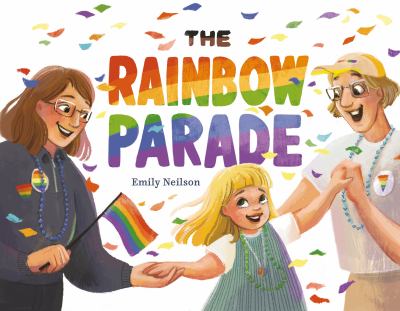 “The Rainbow Parade” by Emily Neilson (2022)
“The Rainbow Parade” by Emily Neilson (2022)
I really love this book for showing the joy of pride parades through the eyes of a kid! The child in this book excitedly appreciates their very first pride parade with their moms. In a day and age where pride parades are often mocked or demonized by folks who hold prejudice against the community, it’s refreshing to see such a joyful perspective from the author about her first-ever pride parade. I feel like I have said this about all these books, but it’s true for all of them: THE PICTURES IN THIS ONE ARE SO CUTE! I love the style and the details that help define characters and scenes. Kids especially will love the parade pictures and the beautiful colors.
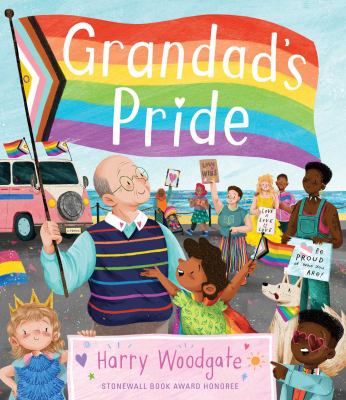 “Grandad’s Pride” by Harry Woodward (2023)
“Grandad’s Pride” by Harry Woodward (2023)
When the grandchild in this tale finds a relic of Pride parades past in Grandad’s attic, it inspires the pair to organize a local Pride parade to celebrate the people of Grandad’s small town. They spend time together making banners and spreading the news. I love Woodward’s illustrations in this series! There is so much love and light in this story. Both “Grandad’s Camper” and “Grandad’s Pride” do a wonderful job of expressing the nostalgic feeling of hanging out with your grandfather and hearing the stories he has to share. There is an element of bittersweetness to the story, since Grandad’s husband has passed away and he clearly misses him. To me, it’s comforting that the grief both of them feel is acknowledged and confronted with support and love rather than brushed over; this book is a wonderful read if your family has lost a member before.
As a final note, I’d like to thank every parent who chooses to support their LGBT+ child. The world can be a difficult place, but when we set peaceful, kind and accepting examples for our children, we allow them to build a world better than the one we were born into.
Happy Pride!
Sources (recommended for further reading!!!):
- “Mirrors, Windows, Sliding Glass Doors” by Dr. Rudine Sims Bishop
- “The History of Pride” by Meg Mecalf
- Information on why Pride exists and is practiced when it is!


